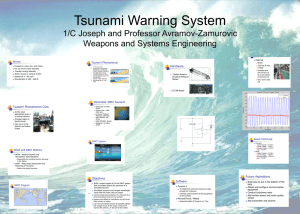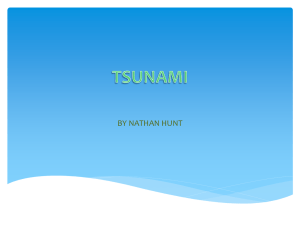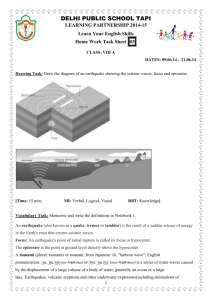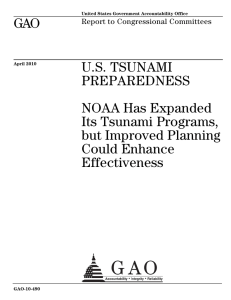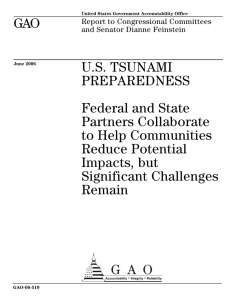Tsunami Warning System MIDN 1/C Joseph Professor Avramov-Zamurovic ES495
advertisement
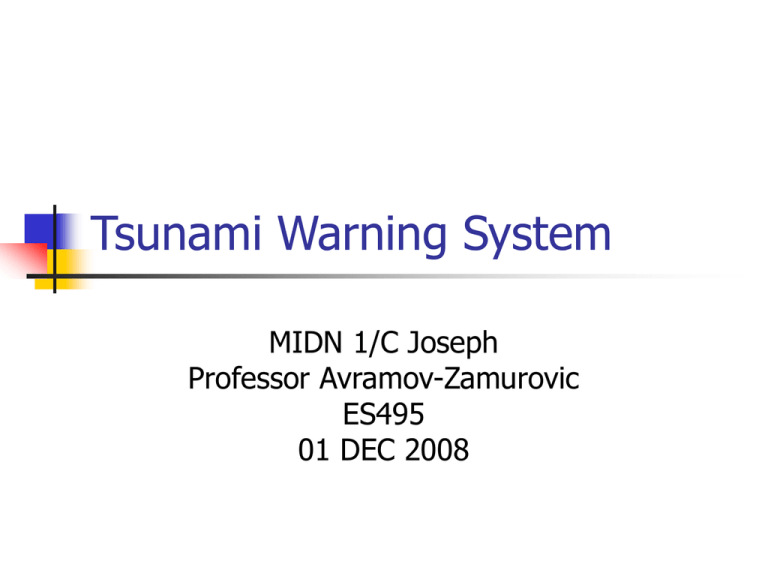
Tsunami Warning System MIDN 1/C Joseph Professor Avramov-Zamurovic ES495 01 DEC 2008 Waves Caused by wind, sun, and moon Do not move water laterally Transfer energy laterally Water moves in vertical circles Speeds of 5 - 60 mph Wavelength of 300 - 600 ft Tsunami Phenomenon A very long wave Caused by an underwater earthquake or underwater volcanic eruption (epicenter) This disturbance has an incredible amount of force Energy dissipates away from the epicenter Speeds of 500 - 600 mph Wavelength of 60 – 300 miles Tsunami Phenomenon Cont. As the wave approaches land, it is pushed upward Principal region is Pacific Ocean Can occur in the Atlantic and Indian Ocean December 2004 Tsunami Earthquake in Indian Ocean Rupture was ~1000 miles long Hit India, Thailand, Malaysia, Indonesia, many Islands, and Africa. Killed 200,000+ people Displaced 1.6 million people NOAA and DART Stations NOAA - National Oceanic and Atmospheric Administrations Responsible for providing tsunami warnings to the Nation DART - Deep-ocean Assessment and Reporting of Tsunamis Station that detect tsunamis DART System DART Program Objectives Build a system based off of the DART system that accurately detects the presence of a simulated tsunami Simulated tsunami is the longest wavelength wave that the Hydro Lab can create Objectives Cont. Communicate the presence of a tsunami to a communications hub on the surface Explore the effect of turbulence on the force that arrives on shore Use environmental sensors to possibly detect the oxygen level of the water, amount of marine life activity, or the pH of the water Hardware 3 Keller-America Acculevel Pressure Sensor ES 308 Board Software Dynamic C To determine when the pressure is high enough for a tsunami Controls communication to the equipment on the surface Microsoft Excel / Matlab Generates plots of Pressure vs. Time Current Status Built circuit Soldered extension cables Wrote C code Modified BNC Cable to talk to Hydro Lab equipment Obtained data at 10 different depths to calibrate the 3 sensors Future Aspirations Build case to put in the bottom of the tank Obtain and configure communication equipment Conduct turbulence tests
